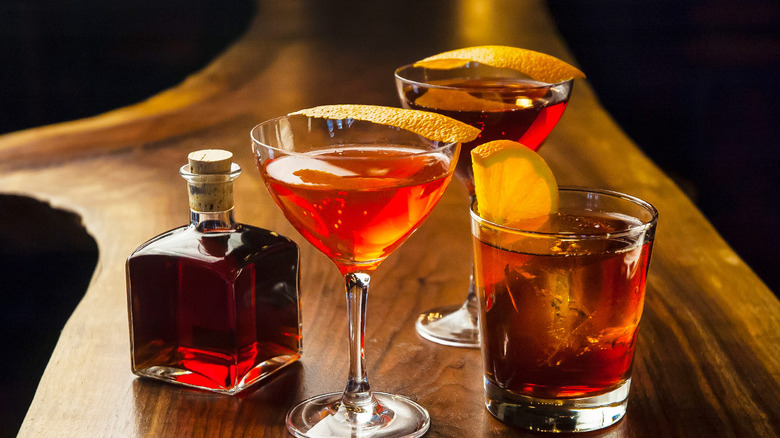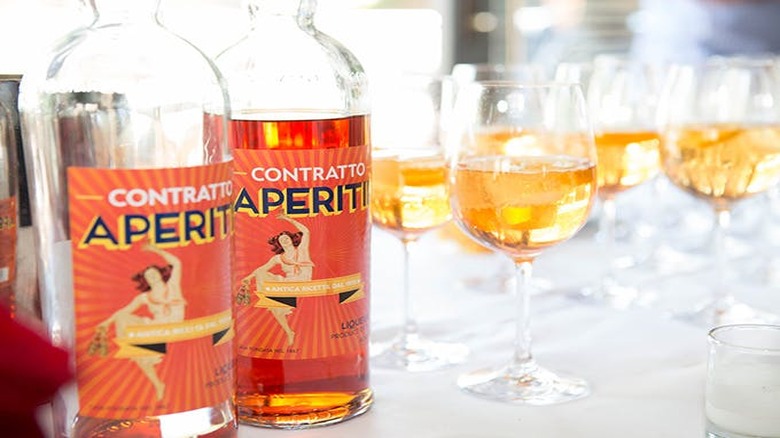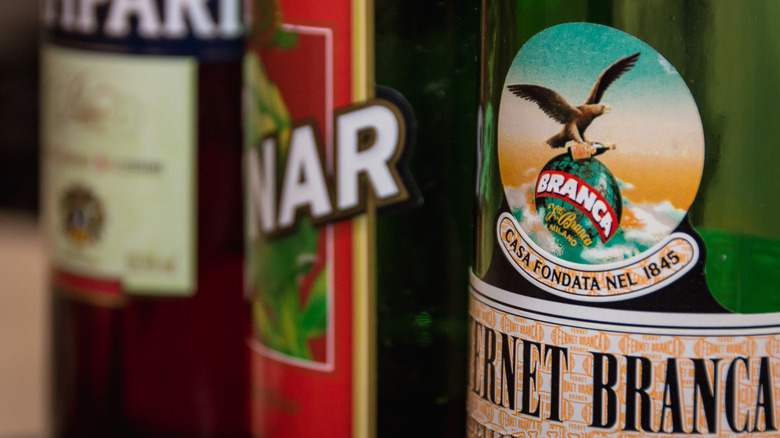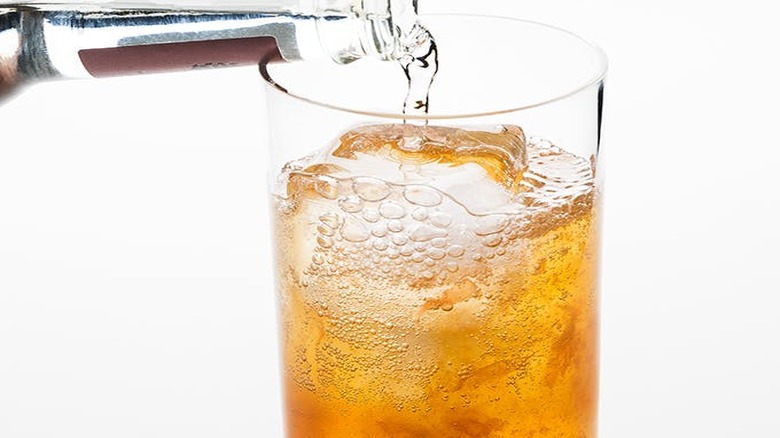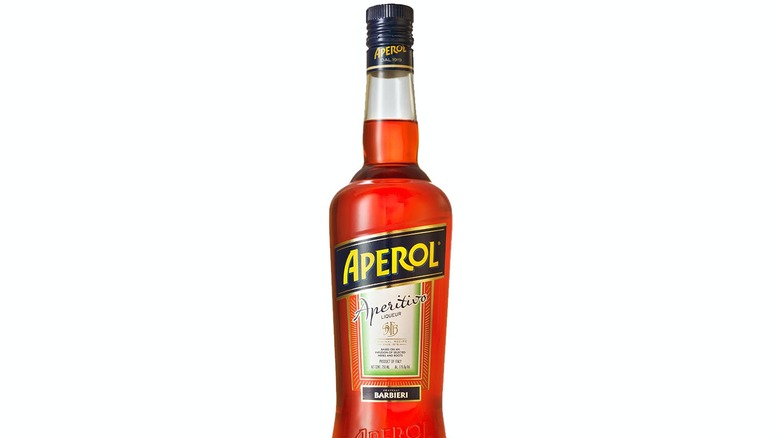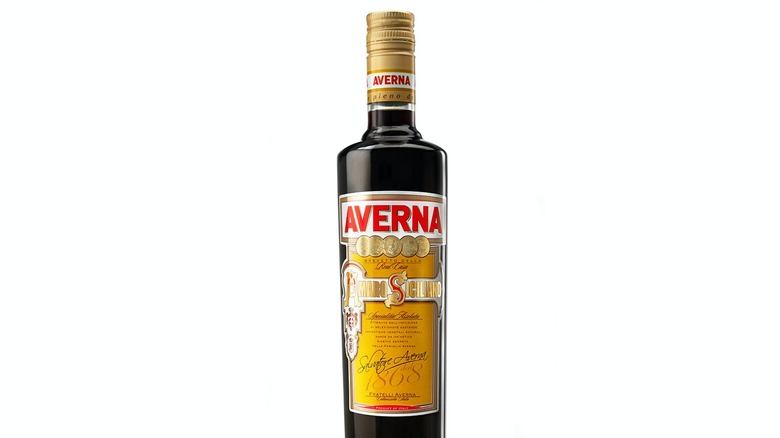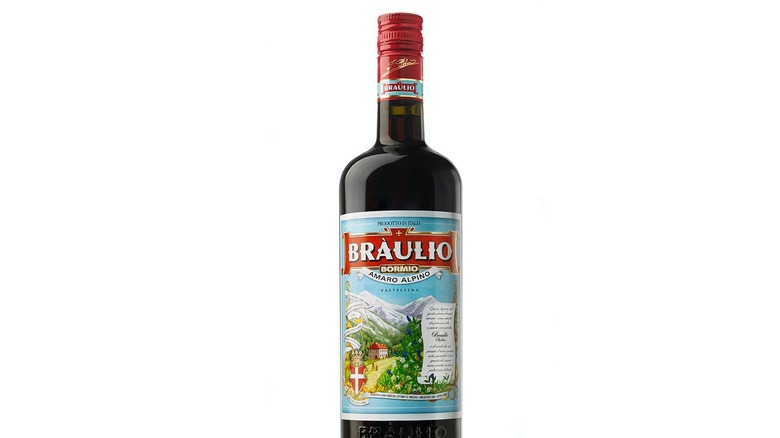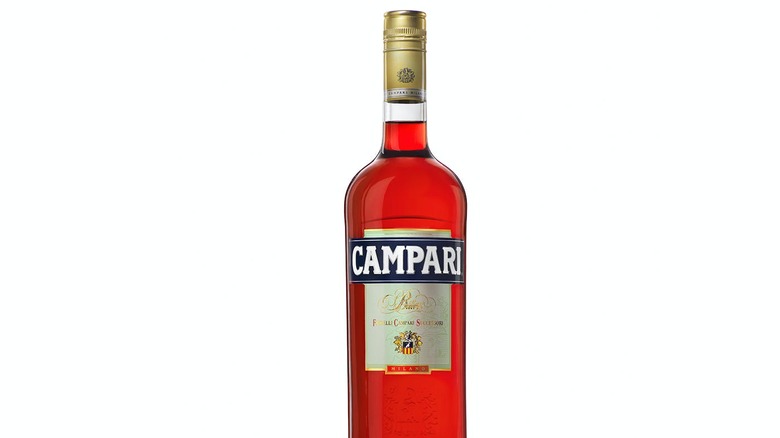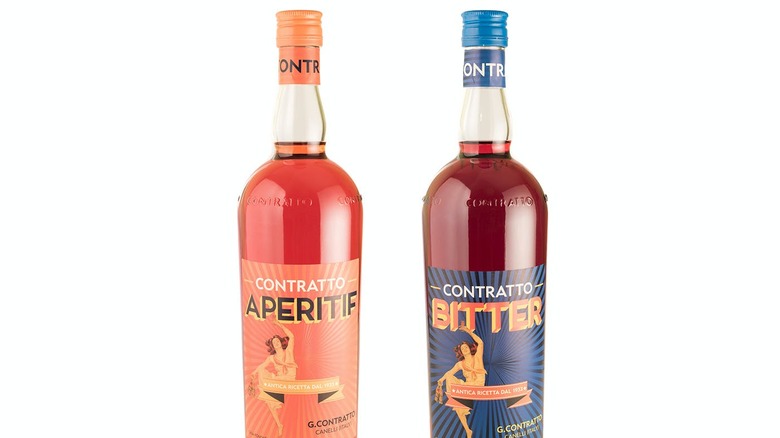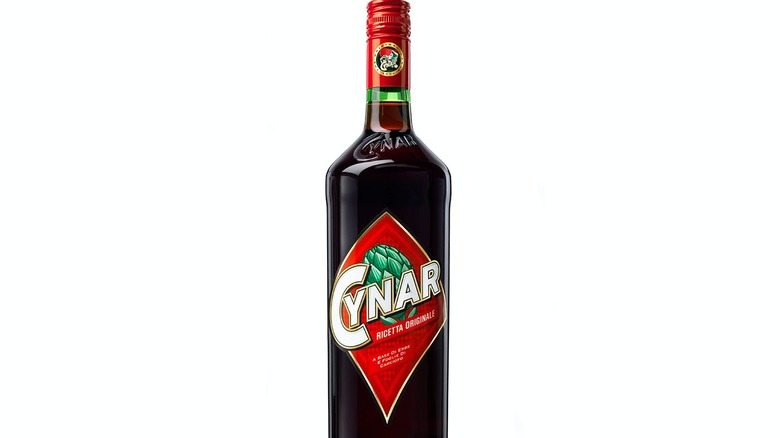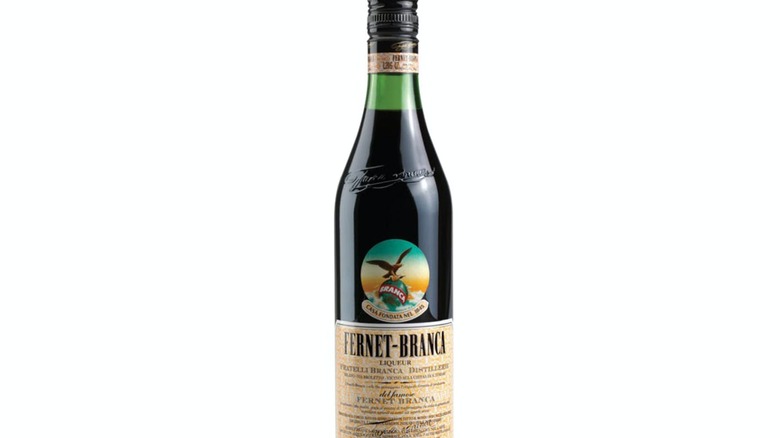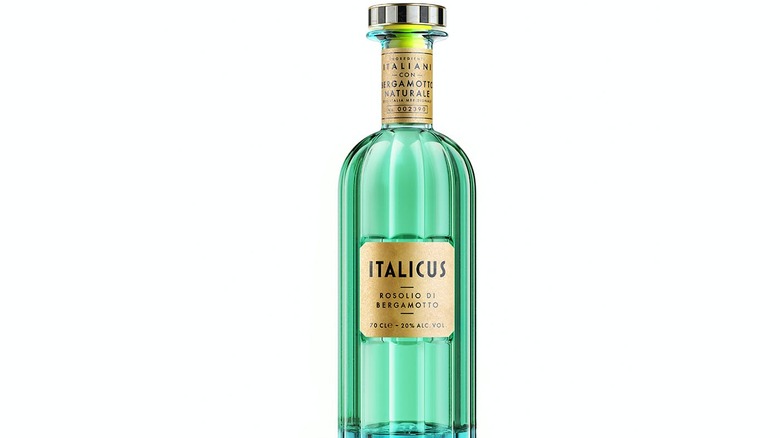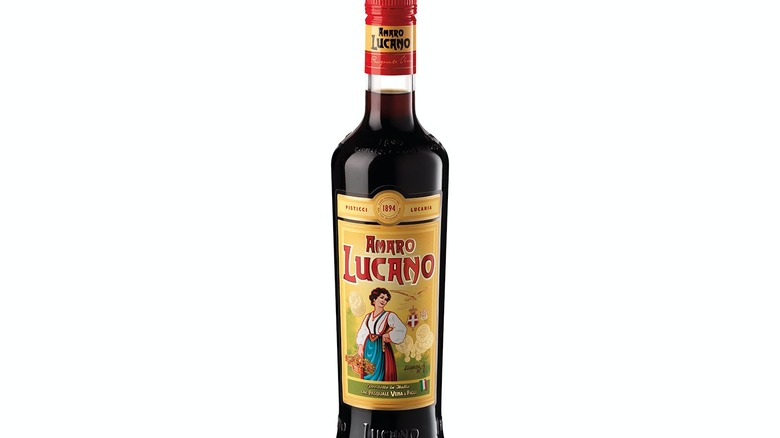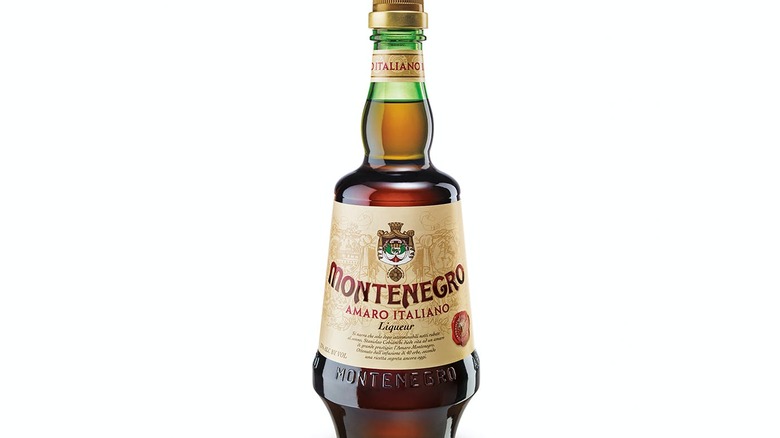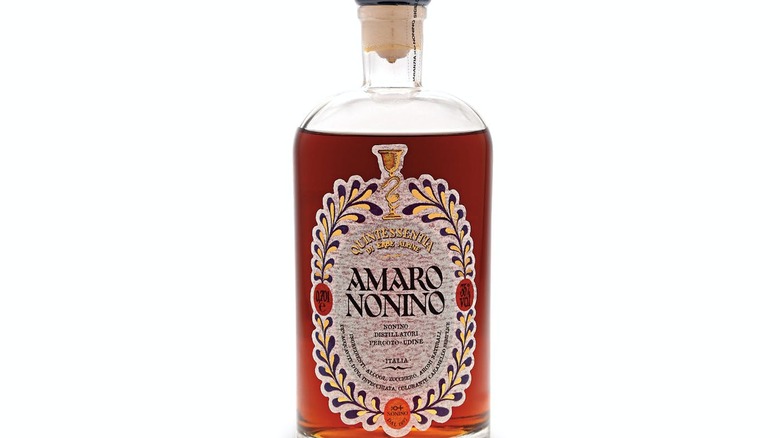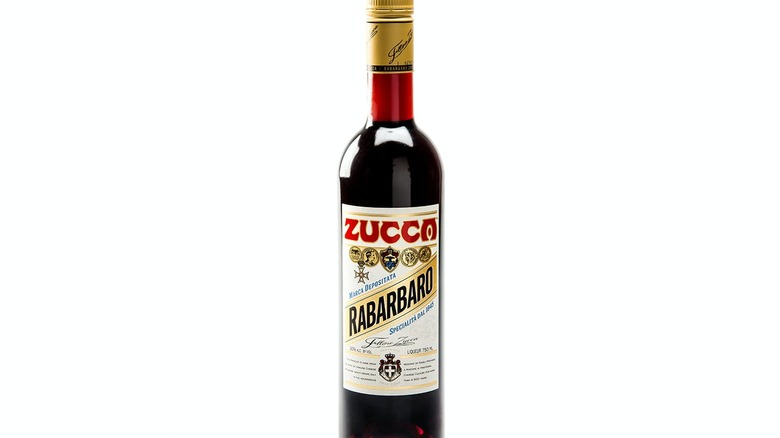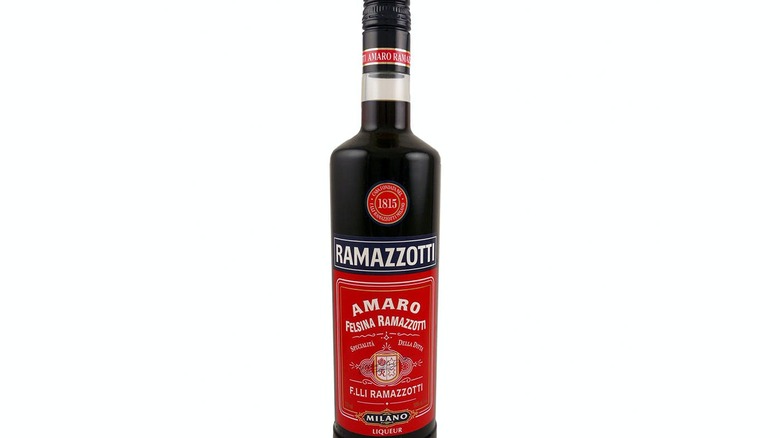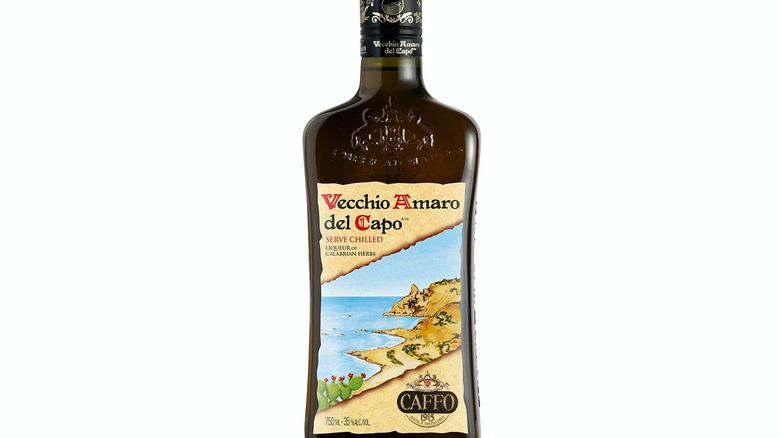What Are Amari And Bitters Anyway?
How to drink like an Italian (and be the person you've always wanted to be)
Italians drink with a purpose. In this wine-soaked country, no dinner is complete without a bottle of vino. But just as important to the Italian way of life is the aperitivo and the digestivo—the typically bitter drinks that precede and conclude a meal. By now, you're undoubtedly an expert at sipping Negronis and spritzes, but with the ever-growing popularity of Italian bitters and amari, it's officially time to expand your horizons and do as the Italians do.
Move Over, Happy Hour
The first concept you need to get acquainted with is aperitivo hour, which occurs in the evening after the workday but before—and separate from—dinner.
"For Italians, it's just the start of the evening, whereas in America, it's the end of the day," says Naren Young, partner and head bartender at New York's Caffe Dante, which won the 2017 Spirited Award for Best American Restaurant Bar at Tales of the Cocktail in New Orleans. This is when you'll find Italians drinking low-ABV aperitivo bitters like Campari, Aperol and Contratto, combined with sparkling wine, fizzy water and/or vermouth. Think an Aperol Spritz or Americano.
Aperitif cocktails | Photo: Contratto
There are "two different types of aperitivo products: wine based and alcohol [spirit] based," Roberta Mariani, global brand ambassador for Martini, explains. Wine-based Italian aperitivi often (but not always) fall into the category of vermouth. Aperitivo bitters tend to be spirit-based liqueurs. Whatever they're drinking, Italians don't mess around with aperitivo hour without snacks, like pistachios, olives and chips.
"This is a timeless philosophy that's been going on in Europe for centuries," Young says. "There's a lot more civility and elegance. There's no rush. No one's there to get hammered." And luckily for all of us, Young believes we're at the precipice of a shift toward aperitivo hour catching on outside of Italy.
He may very well be correct. In addition to Dante, successful aperitivo-centric bars have opened in major cocktail cities across the globe, like London's Bar Termini and Sydney's Maybe Frank. "I love the fact that even in a country like Australia with a very strong drinking culture (and get-drunk culture), this style of drinking is slowly getting accepted," Maybe Frank co-owner Stefano Catino says.
After the Party . . .
After dinner, Italians reach for an amaro—and here's where the nomenclature gets a bit confusing. Amaro means "bitter" in Italian, but unlike aperitivi bitters, which are typically red or orange and never consumed after dinner, amari are dark, herbal and often served to complete a meal without a mixer—chilled and/or over ice. A growing list of favorites making their way stateside includes Averna, Cynar, Montenegro and Fernet-Branca.
These herbal digestives aren't reserved exclusively for after dinner either. Italians consume amari strategically all day long. "Choosing what to drink and when is based on the different times of the day," Nicholas Pinna, bar director at the Hotel Locarno in Rome, says. A common midday option in Italy is referred to as caffè corretto, or "corrected coffee." After downing an espresso, an amaro might be used to "wash out" the remnants left in the cup. And there are certain amari with coffee or coffee-like flavors that are favored for this occasion.
Cocktail Kingdom
Part of the reason bitters and amari-based cocktails are gaining so much traction outside Italy is because they make a "great base as a mixer," says Giuseppe Gallo, Italian spirits expert and creator of the aperitivo Italicus Rosolio di Bergamotto, which won the 2017 Spirited Award for Best New Spirit. Sure, cocktail bars in the U.S. and around the world have been using amari for years. But there are now several popular cocktails that contain amari, including variations on classics like the Manhattan (the Little Italy, the Bywater) and the Last Word (the Division Bell, the Paper Plane).
Sparkling Cynar cocktail | Photo: Tasting Table
And the influence goes both ways. "Slowly, the American influence to mix [amari] in cocktails is starting to arrive in Italy, too," Gallo says. The Americano (Campari, vermouth and soda) originated when Americans in Italy began requesting the addition of soda in their Mi-To aperitivo (which was just Campari and vermouth) more than a century ago. Indeed, cocktail bars—which aren't a traditional establishment in Italy—are beginning to pop up all over the country, though they remain something of a curiosity to locals. "When the Jerry Thomas Project [cocktail bar] opened in Rome [in 2009], it attracted many people, as they were curious to understand the speakeasy concept," Pinna says. "In fact, many other speakeasy bars opened to satisfy the growing curiosity of the public."
Don't worry though. Pinna continues, "Regardless of this, Italians have solid drinking habits that go way back in time, and I strongly believe that this will not change, despite the recent presence of the American cocktail culture."
Follow their lead and start drinking bitters and amari in cocktails, with soda or on their own. Use the guide below to get started.
Aperol
Tasting Notes: A bright and floral aroma with the scent and taste of mildly sweet orange fruit and a touch of bitterness.
How to Use It: The Aperol Spritz is one of Italy's most ubiquitous cocktails. The classic is made with a ratio of 3:2:1: three parts Prosecco, two parts Aperol and part soda water. Traditionally, the drink is served over ice in a wine goblet and garnished with both olives and a slice of orange.
Averna
Tasting Notes: An old Sicilian brand dating back to the 1850s, Averna is rich bodied with spice on the nose. Notes of pepper and vanilla are balanced by the flavor of cola and dates.
How to Use It: A Bywater, served at Chris Hannah's Arnaud's French 75 Bar in NOLA, is 1.75 ounces of aged rum, 0.75 ounce of Averna (as a substitute for Amer Picon), 0.5 ounce of green Chartreuse, a bar spoon of Velvet Falernum, and 2 dashes each of Peychaud's Bitters and Regans' Orange Bitters. Stir and serve it up with a cherry.
Braulio
Tasting Notes: A well-balanced dark amaro that is produced in the Italian Alps using a number of aromatic herbs, berries and roots. Flavors of juniper, mint and gentian are balanced by bitter orange and honey.
Campari
Tasting Notes: Bitter orange citrus peel and floral and herbal notes like gentian on the nose and palate, balanced by sweetness and velvety viscosity. The impact of Campari on drinking culture cannot be understated.
How to Use It: One favorite is the Garibaldi, which has been perfected by Naren Young at Dante in NYC. It's simply one and a half ounces of Campari and about four ounces of fresh orange juice. (Young puts his oranges through a Breville juicer to order, giving the drink some lovely froth.) To make the Dante version, add two ice cubes to a highball glass. Add Campari and a little of the OJ, and then stir well to combine. Add one more ice cube, and then fill the remainder of the glass with OJ. Garnish with an orange wedge resting on the rim and serve with a plastic stirrer.
Another favorite of mine is the Negroni Sbagliato, which is a classic spin on a Negroni, supposedly invented in the 1970s when a Milanese bartender reached for the gin but grabbed the Prosecco by mistake. Prego! To make the drink, pour one ounce each of sweet vermouth and Campari into a rocks-filled wine goblet or old-fashioned glass and stir. Top with one to three ounces of Prosecco (to taste) and stir again gently before adding a slice of orange.
Contratto Aperitif and Contratto Bitter
Tasting Notes: These two aperitivi products from the Piedmont region of Italy have been reformulated from recipes first created in the 1930s and are solid substitutes for Aperol and Campari, respectively. Both are made with a brandy base and utilize beet and carrot extracts for coloring.
Cynar
Tasting Notes: This is the only amaro that can double as an aperitivo bitter, due to its low ABV. It gets its name from the latin word for artichoke. But you wouldn't know it from the hints of vanilla, orange peel and dried fruit, balanced with a bittersweet herbal complexity.
How to Use It: The Little Italy, created by Pegu Club's Audrey Saunders, is a Manhattan variation that combines 2 ounces of Rittenhouse 100-proof Bonded Rye, 0.75 ounce of Martini & Rossi Vermouth Rosso and 0.5 ounce of Cynar. Stir and serve up in a coupe with a cherry.
Fernet Branca
Tasting Notes: This higher-proof amaro is on the bitterest end of the amari spectrum and is made with a secret mix of ingredients, including chamomile and saffron. It has aromas and flavors of menthol and anise, and is popular as a shot among bartenders.
Italicus Rosolio di Bergamotto
Tasting Notes: This newly released aperitivo bitter is light in color with bergamot citrus and flowers on the nose. Sweet, ripe citrus fruit with a touch of bitterness balanced by a light and floral spice make this a nice pairing for Prosecco.
Lucano
Tasting Notes: Lucano has been made by the Vena family for several generations out of a small town in the province of Matera within the southern Italian region of Basilicata. Amaro Lucano has a pleasant combination of bitter and sweet, with mint and anise balanced by notes of chocolate, caramel and cinnamon.
Montenegro
Tasting Notes: A light and sweet amaro from (and very popular in) Bologna, this bottle can be found behind many bars across Italy. It has a blend of flavors that includes orange peel, black cherry, cinnamon, cucumber and coriander.
Nonino Quintessentia
Tasting Notes: This is one of the most refined and expensive amari on the American market. This distiller, based in Friuli, is also known for its grappa.
How to Use It: The Paper Plane was created by Sam Ross for the Violet Hour in Chicago in 2007. It combines 0.75 ounces each of bourbon, Amaro Nonino Quintessentia, Aperol and fresh lemon juice. The ingredients are shaken with ice and served up in a coupe.
Rabarbaro Zucca
Tasting Notes: This popular Milanese amaro utilizes Chinese rhubarb roots among other botanicals.
How to Use It: The Roma – Bracciano was created by Nicholas Pinna, head bartender at the Hotel Locarno in Rome, in 2009. It's made with two ounces of Campari and one ounce each of sweet vermouth (preferably Carpano Antica Formula) and Rabarbaro Zucca. Add a dash of orange bitters and shake before serving it up in a coupe with an orange peel garnish.
Ramazzotti
Tasting Notes: Created in Milan in 1815, this is one of the oldest amari on the market. It is now owned by Pernod Ricard and produced in Piedmont. You can find hints of cinnamon, cola and orange peel in this herbaceous amaro.
Vecchio del Capo
Tasting Notes: This lightly bitter and sweet amaro from the southern Italian region of Calabria is often kept in the freezer and served neat. Among the ingredients are orange, liquorice, camomile, tangerine and juniper.
